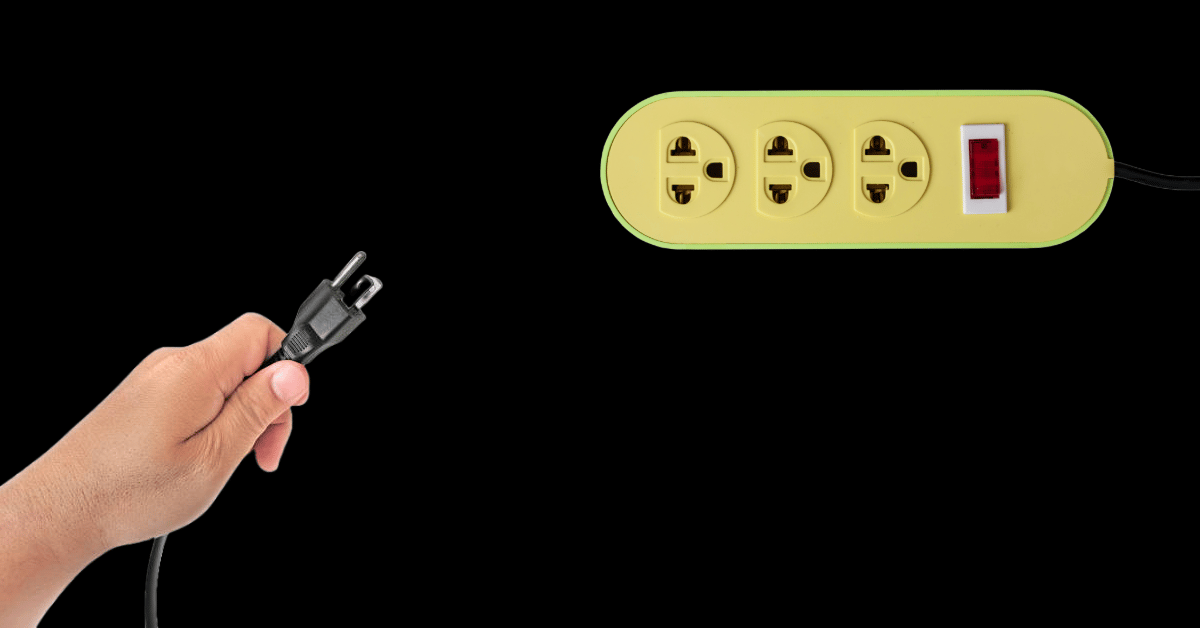
Meta just deleted half a million accounts.
Why, you ask? Oh, for predatory content targeting children. Not only that, but Meta proudly announced that teen users flagged another 2 million accounts in June alone (um, weird thing to brag about, but ok). The Kids Online Safety Act is currently sitting with Congress which, if passes, would require platforms to have a “duty of care” when it comes to harm to minors. In the meantime, here’s hoping Meta’s new teen safety measures make calling out bad behaviour a tad bit easier.
- Charlotte Ellis, Editor ♡
WHAT’S HAPPENING IN MARKETING TODAY?
Meta announces new teen safety features, UK intros Online Safety Act & South Park crosses a line

Meta updates safety features for teen users.
Meta found over 600,000 accounts connected to predatory behaviour. And 135,000 of these accounts were found leaving sexualised comments/ requests from adult-managed children’s accounts. Imagine how tired we are. And how shocked we aren’t.
On Wednesday, Meta introduced new safety features for teen users. These included enhanced DM protections to prevent “exploitative content.” This means teen users can now see more information about who they’re talking to, like when the account was created and how to spot potential scammers, along with other tips to keep themselves safe.
They will also be able to block and report accounts in a single action, which, in June alone, teen users did 1 million times. Teens reported another 1 million accounts after seeing a safety notice – according to the company. Meta has faced mounting scrutiny over the last few years, accused of failing to protect younger users from sexual exploitation. Turns out, the internet is full of freaks (not the good kind) and hold one thing in common – they sure love Meta.
The UK introduces The Online Safety Act.
Speaking of new safety measures, Britain has its own set. The new Online Safety Act “mandates that web service operators must use ‘highly effective’ age verification measures to stop kids from accessing a wide range of material.” The act came into place last Friday and is primarily focused on, but not limited to: adult content, promotion of suicide, self-harm, or eating disorders. The act also includes things like bullying, abusive or hateful content, and dangerous stunts or challenges.
Now, people across the UK are facing a censored and partially inaccessible online landscape. And they’re already finding loopholes. Let’s just say it’s a great day to be a VPN provider.
South Park makes things messy for Paramount.
In September, South Park creators Matt Stone and Trey parker told Vanity Fair they would no longer satirise President Donald Trump. “I don’t know what more we could possibly say,” the pair declared. Welp, we do. As of yesterday. The same day Paramount announced a five-year streaming deal with South Park - including 50 new episodes, the show’s 27th season premiere mercilessly mocked both President Trump and the network for capitulating to his demands.
The episode, called “Sermon on the Mount,” was not light handed on the roasting, either. It portrays him as Satan's lover, as they did with Saddam Hussein in the 1999 movie South Park: Bigger, Longer & Uncut.
And get this: the episode literally aired as Paramount is set to merge with media company Skydance, a move that’s been heavily speculated as a ploy to keep Trump happy post the $16 million settlement. Last week, The Late Show with Stephen Colbert was cancelled, after calling the settlement a “big fat bribe,” claiming “the gloves are off,” and telling the president “go f*ck yourself.” Sheesh. It’s getting hot in here.
-Sophie Randell, Writer
DEEP DIVE
Why does saying “I work in social media” feel like outing yourself?

Let me paint you a picture.
You’re at a party, or a conference, or that random work thing where they serve dry wine and everyone pretends to love what the next agency has to say. Someone asks you the inevitable:
“So, what do you do?”
You hesitate. Your palms get a bit sweaty. Your brain races through 18 ways to spin it. And finally:
“I’m on the social team.”
Cue the polite nod. The tilted head. Slight smirk. Maybe even a “So you post TikToks?” if they’re feeling bold.
Been there. Trust me. Despite being one of the most fast-paced, creatively demanding, emotionally draining jobs in marketing, it still carries the weird weight of not sounding “serious” enough. And that’s wild.
Because in reality? The social team are the ones building your brand. Every. Single. Day.
Social is everything, but it's treated like an afterthought.
Let’s talk facts. People don’t discover your brand from a 78-page strategy deck or a TVC that took 9 months and a small nation’s GDP to produce. They meet your brand in the wild. In their feed, in a story, in a comment thread, in a DM they’ll screenshot and send to their group chat.
And yet… based on what I’ve heard, social teams are still too often the last ones looped in. Given a brand idea that’s been cooked, overcooked, and plated three times over. Then told to “make it go viral.” Or “add a TikTok.” Or worse, “can we make this fun?”
All without the strategic context. Without creative support. Without actual authority. But yes, with full accountability for how it lands in the real world.
“Just make it social,” a.k.a. the modern marketing cop out.
When a brand idea doesn’t translate beyond a press release? “Social can fix it.” When the tone of voice is confusing, sterile, or allergic to human emotion? “Just tweak it for social.” When customer sentiment tanks? “Can the community managers respond to the comments?”
Newsflash: social isn’t a life raft for broken strategy. It’s not the duct tape holding your big brand idea together. It’s the literal heartbeat. The connective tissue. The place where brands either earn relevance or quietly fade into the digital abyss.
But despite that, social media is still treated as junior, both in title and in influence. It’s the marketing equivalent of the intern with the aux cord. Expected to set the vibe, make things cool, and not touch too much budget.
But can I be honest for a second (of course I can—who am I kidding)? This job can be brutal.
You know what the job description doesn’t say?
“Must handle crises in real-time while maintaining a cheeky tone.”
“Should be okay with being everyone’s scapegoat when metrics go sideways.”
“Will be expected to comment on cultural moments within 4 minutes of them trending.”
“Oh, and be funny. But not too funny. And not offensive. And never weird. But definitely on-brand. Even if no one can explain wtf that even means.”
Meanwhile, social teams are often:
Underpaid
Under-resourced
Over-accountable
And still showing up every day to make your brand feel like it has a soul.
Imagine… stay with me here… bringing in social from the start.
Here’s a wild idea: what if social wasn’t an afterthought? What if it was part of the brand-building process from day one?
If social teams were included in brand strategy, you’d get:
Campaigns that don’t need five rewrites to survive the comment section
Content that’s built for relevance, not just aesthetics
A tone of voice that actually works outside of a PDF
Teams that feel empowered, not exhausted
Social is the one team already operating at the speed of culture.
So if you want your brand to be relevant, agile, and resonant? That’s where you start. Not where you retrofit.
Because social teams are not “just posting.” We’re building brand equity in real time. We’re answering customer questions, reacting to world events, measuring sentiment, driving reach, and building affinity. All while using slang your CMO still thinks means “laugh out loud.”
Social media isn’t “less strategic.” It’s just strategic faster.
If you’re still treating social as a junior discipline, you’re not just behind. You’re leaving money on the table and relevance in the dust.
So the next time someone tells you they work in social media? Don’t smirk. Don’t nod politely. Ask them what you can learn.
Because odds are? They know more about your brand than you do.
-Sophie Randell, Writer
TREND PLUG
What the f*ck did I do?

Today’s audio comes from Celebrity Big Brother UK (2016), where reality TV icon Tiffany Pollard (aka “New York”) spirals in the Diary Room:
“Now everyone’s ganging up against me… for what? What the f*ck did I do?” It’s loud. It’s unhinged. It’s victim-mode excellence. And it’s now the soundtrack to everyone’s most unserious moments of fake confusion.
TikTokers are pairing the sound with captions that confess to chaos; usually when they clearly did do something wrong but are choosing to act shocked anyway. The trend thrives on contradiction: you say or do something bold, messy, or borderline offensive… and then pretend to be blindsided by the backlash. The humour lives in the denial.
How you can jump on this trend:
Use the sound and overlay text describing something you said or did that you know turned heads (and act like you’re the victim). Keep it delulu. The tone is, “I stand by it, but how dare you react.”
A few ideas to get you started:
When someone says “that’s not your job” and I already took it on for visibility
When someone says “don’t post that, it’s not worth it” and I already scheduled it
When someone says “no one likes people who self-promote” and I just pinned my LinkedIn post
- abdel khalil, brand & marketing executive
FOR THE GROUP CHAT
😲WTF: The Longest Walk In History
❤How wholesome: we don’t deserve dogs
😊Soooo satisfying: Filling bubbles
🍝What you should make for dinner tonight: Yaki Udon
TODAY ON THE YAP PODCAST
Want even more “YAP”ing? Check out the full podcast here.
ASK THE EDITOR

For my brand, I have some content we have to post, like media presses, packages and deals, and commercial events. Then we have our team’s storytelling type authentic content alongside that. How do I balance this without confusing our audience or ruining their experience when they land on our feed grid? - Daniel
Hey Daniel!
There's no issue with having both of these content types on one account. It shouldn't hurt your engagement or reach. But you do have the option to just create multiple accounts. For example, you could have a main brand account and a separate one for the team or community content.
This would mean you could go all-in on each style without feeling like you're sending mixed messages. But you don't have to go this route! Your audience can handle a little messiness. The important thing is you're posting with purpose—that your content aligns with your goals. Everything else is just details.
- Charlotte Ellis, Editor ♡

